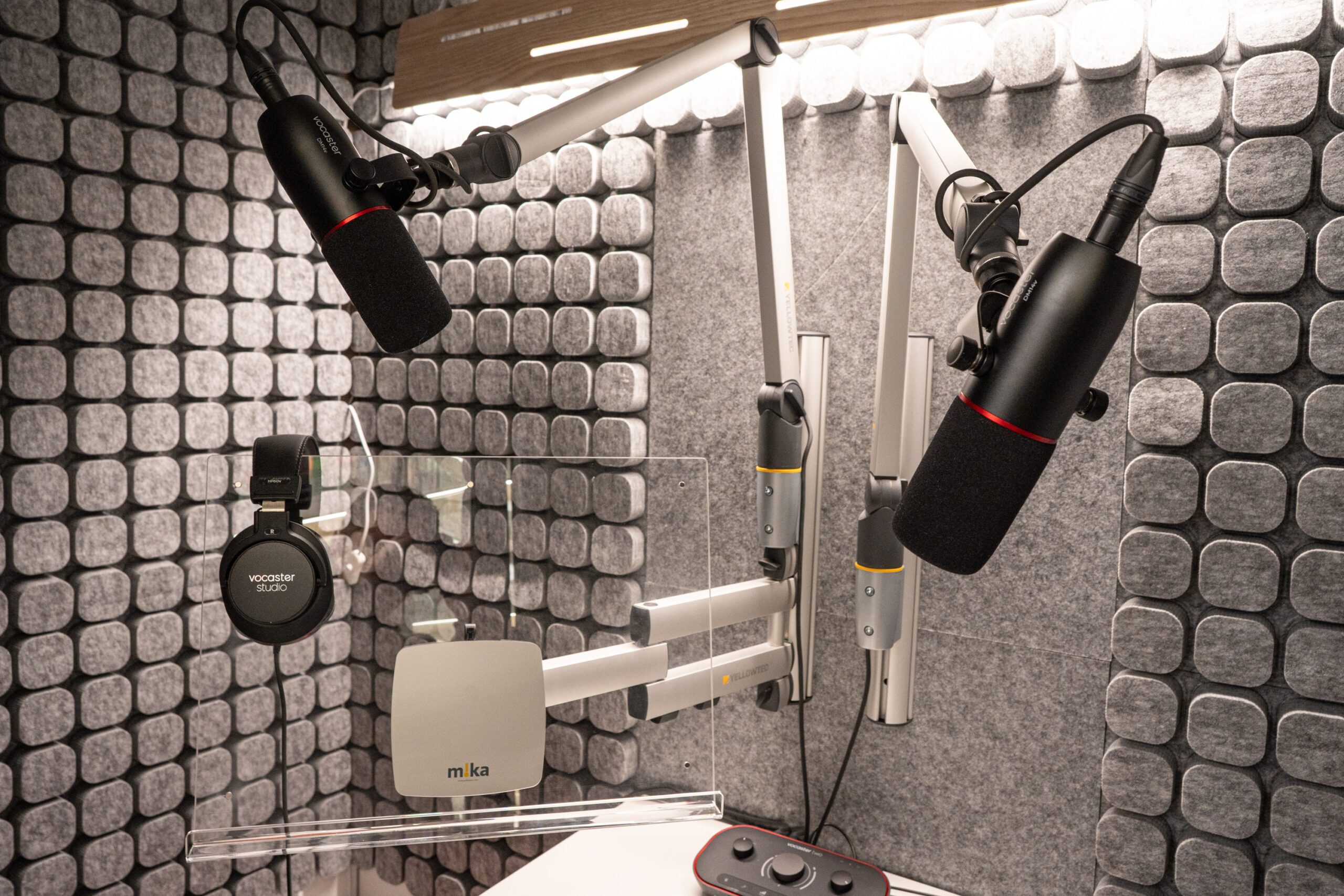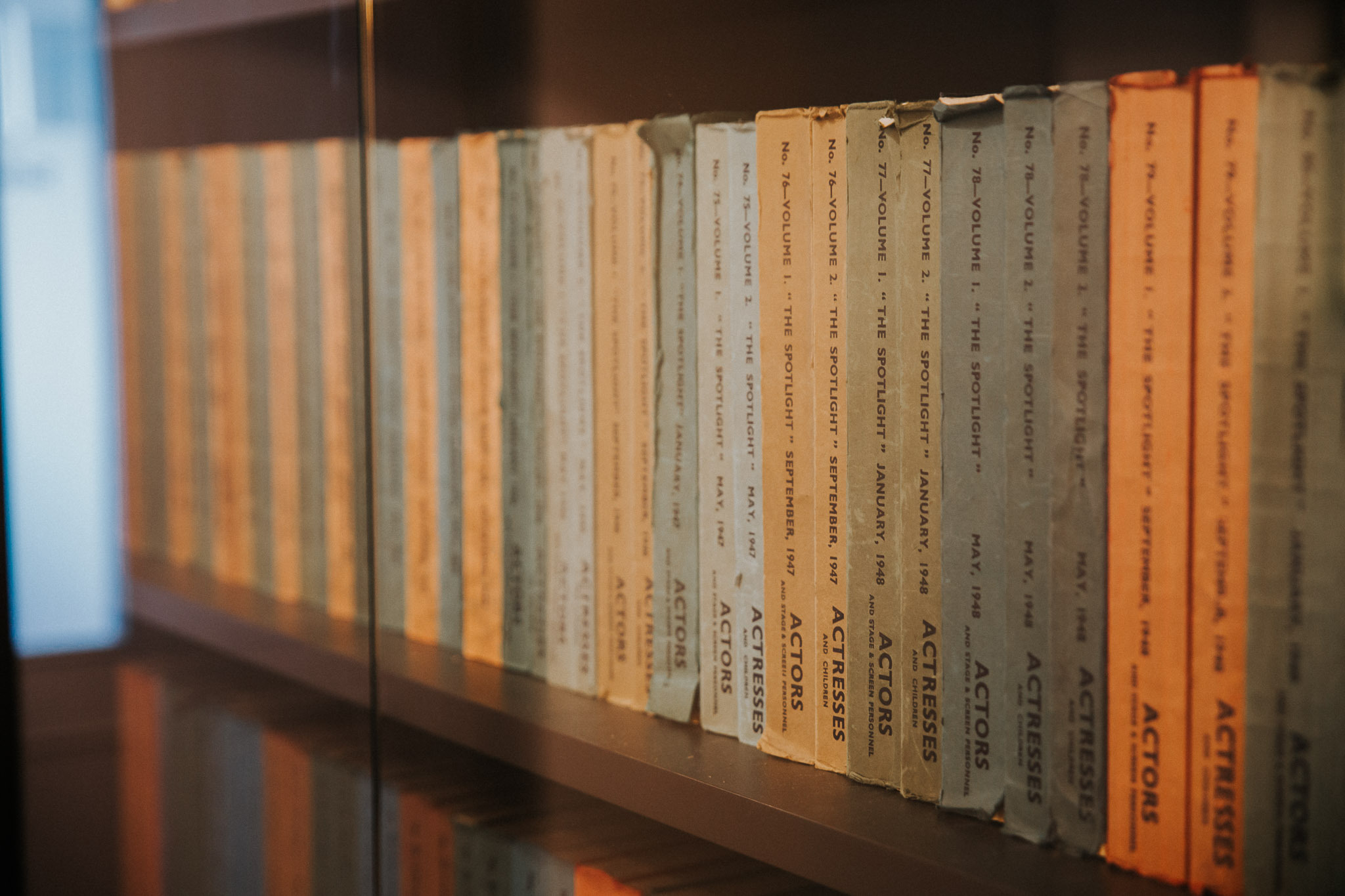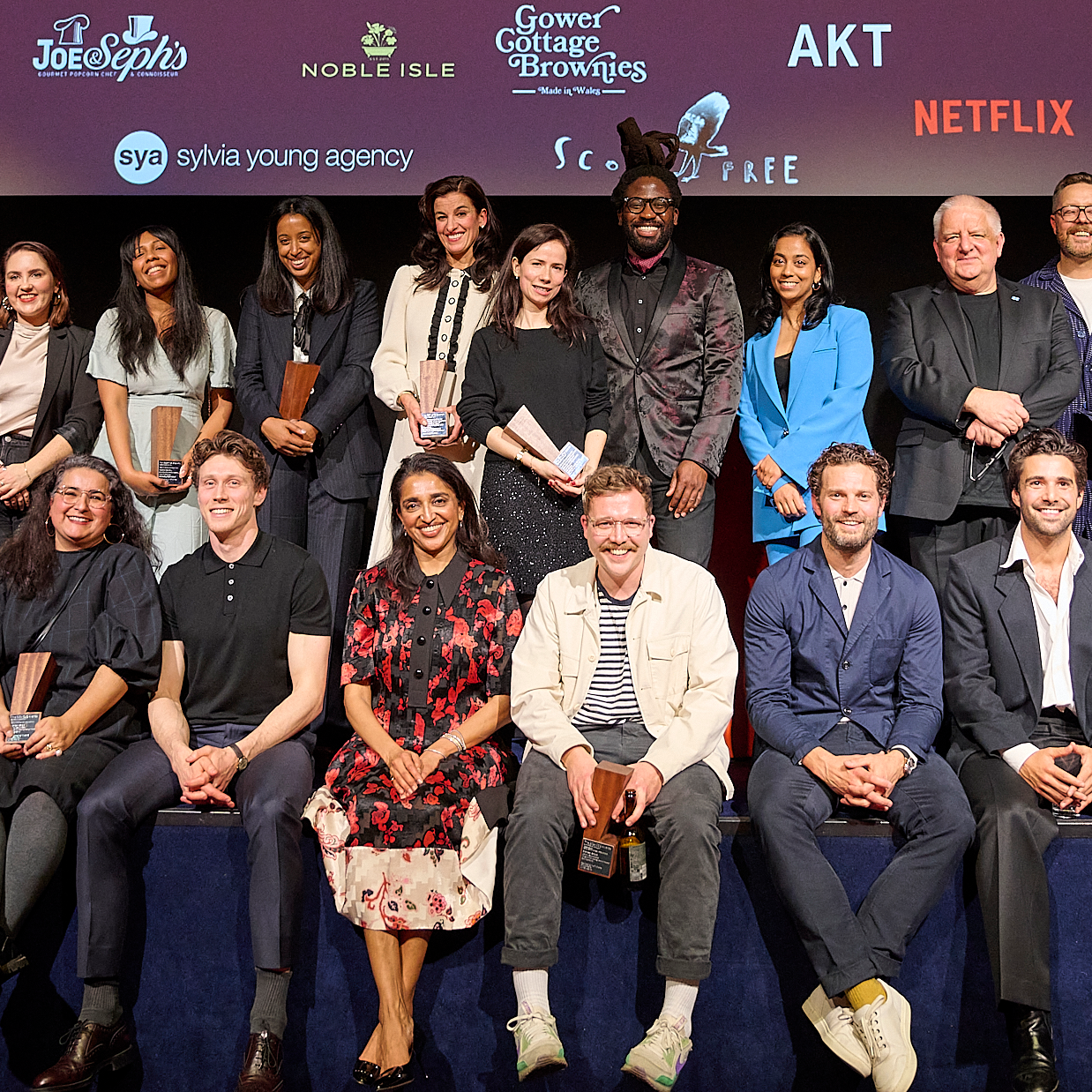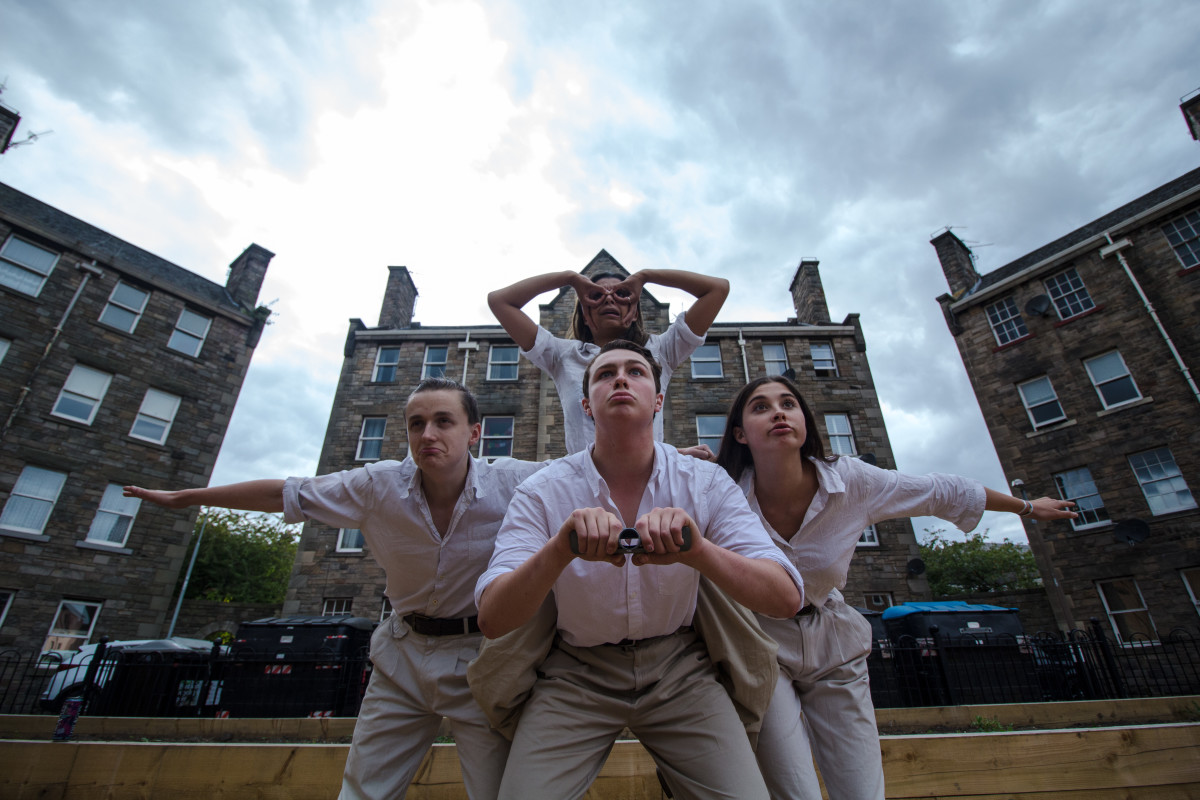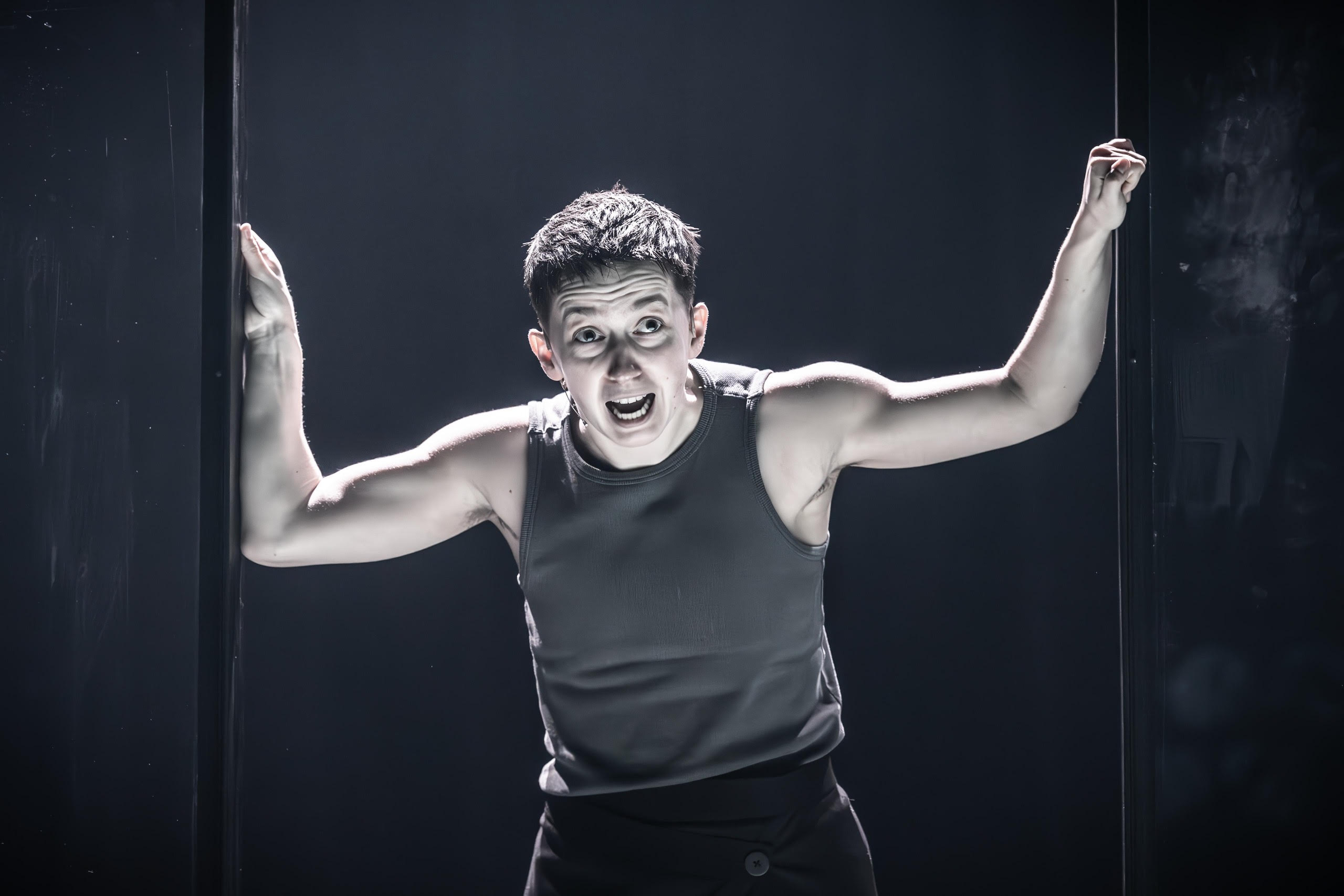 From Andre Agassi, to Haruki Murakami, to my school’s old career advisor, the world is not short of people who insist that image is everything. The Edinburgh Festival Fringe is perhaps the epitome of this notion, as the city is awash with posters and advertisements. Your pockets certain to be stuffed full of flyers after even the shortest walk through the city.
From Andre Agassi, to Haruki Murakami, to my school’s old career advisor, the world is not short of people who insist that image is everything. The Edinburgh Festival Fringe is perhaps the epitome of this notion, as the city is awash with posters and advertisements. Your pockets certain to be stuffed full of flyers after even the shortest walk through the city.
Standing out, then, is vital. Experiencing the sheer quantity of posters and flyers in Edinburgh, it is easy to be swept up in poster and print decisions – I’ve been party to 20 minute arguments about whether flyers should be printed on glossy or matte material. Image, however, is only a part of the overall publicity and promotion – a good press release and a cunning marketing or flyering strategy are just as important.
For the purposes of this blog, I’m going to assume that you have decided not to hire a PR agency to publicise your show, although much of what is written I would argue applies in all circumstances.
The Fringe brands itself as “the world’s greatest platform for creative freedom” in their 2017 review, and whilst it seems an impossible task to try and stand out amongst the thousands of other outrageously talented people who flock to the city in August, this key truth means your options are practically limitless. It also applies to how you present your show – very little is off limits. With this in mind…
The festival is diverse and bonkers – that’s what makes it brilliant – but it’s because of this that you’re as likely to be able to appeal to everyone’s aesthetic tastes with your design as you are to end up with an audience in which everyone has the same birthday. I can’t speak to individual tastes, it would be ridiculous to do so, but I’m always surprised at the number of plain, neutral posters I see, particularly avoiding colour.
Aiming for universal appeal is admirable but can lead to producing something boring that actually doesn’t appeal to anyone. What we as a company have tried to do so far is to end up with posters we like and would want to see, and we’ve been fortunate to have our fantastic designer, Adriana, to realise this. We have found our posters are most successful when we take risks, use colour, and consider every element of the show’s design from the composition of the different elements, to the font.

It is worth pointing out that a flyer in someone’s hand absolutely does not mean they are going to buy a ticket. First of all, it is vital that you and your team are selling your show and seem passionate when talking to people. However, if interesting and exciting print design combined with some savvy flyering isn’t doing enough to get bums on seats, getting creative with your marketing strategy can be a great way to capture attention and sell your show.
Street performing in Edinburgh is often met with snarls of irritation from those trying to get from A to B, but harnessing the main selling points of your show in the street is a surprisingly underutilized tool.
Rather than show off your show’s best bit on a street corner with rubbish speakers so no one can hear the music and no one stops to watch, make use of the bits of your show that are unique. For Our Man in Havana we have taken the vacuum cleaner into public spaces and asked people to challenge us to make things out of it, and I was once in a show that featured a police chase, so I was chased by 1920s policemen through the streets of Edinburgh. Be as different and silly and original as I have no doubt your show already is – embarrassment doesn’t mix well with flyering!
Our producer Niki and I were at the Pleasance’s pre-Edinburgh meet and greet last week, and one of the biggest things we took from it was the importance of responsiveness. Whether it’s targeting specific reviewers based on the kind of work they have written about previously, trying to tap into topics that are relevant to your show and around which there is a buzz or simply being honest with yourself that the strategy you’ve been employing isn’t working, and being willing to switch things up and improve.
Of course, seizing every opportunity you are presented with is generally good advice, but actively seeking it out and looking for it in different places can not only widen your potential audience, but also help you forge valuable relationships. As the evening wears closer to bedtime (whenever that is during the festival), venues become awash with cabaret and variety nights which are always on the lookout for acts. Reworking a section of your show for one of these events is just one example of the strange opportunities you can take advantage of, and seeking out smaller publications or websites who look for stunts to get clicks is another great way to get free publicity.
 I am a firm believer that if the quality of the work is good enough, then people will want to come and see it, but whilst unfortunately there are exceptions to this rule, the power of word of mouth at the festival means that whispers of good work will always dance on the Edinburgh breeze. It can be difficult at the start though, and no matter how good the production is, if people aren’t coming then there’s no one to do your whispering for you.
I am a firm believer that if the quality of the work is good enough, then people will want to come and see it, but whilst unfortunately there are exceptions to this rule, the power of word of mouth at the festival means that whispers of good work will always dance on the Edinburgh breeze. It can be difficult at the start though, and no matter how good the production is, if people aren’t coming then there’s no one to do your whispering for you.
Don’t wait until it’s too late to start spreading the word on social media! Come late July thousands of shows will start piping up on Twitter with a clever hashtag and a million reasons to see their show, but building up momentum and cultivating a following in advance will leave you in a much better place. Start now! It is also the place audiences are most likely to talk about you, so make sure your retweets of praise aren’t being shouted into the internet ether to 12 followers!
There are also dozens of opportunities for shout outs and digital interviews from websites and other companies that will crop up in the weeks before the festival kicks off officially on Friday 3rd August (less than 80 days away!), so get on Twitter, scour Facebook, and take advantage of them before anyone else does.
As a quick caveat to this blog if you missed my first post, I don’t claim to be an authority on all things Edinburgh. Everything you read here is opinion based on my experiences at the festival over six years as a performer, director or writer. So far, I have learned that there is no single ‘way to do it’ and different people give you varied and often contrasting advice. Marketing and promotion of your show is important, but you and your creative team around you are the greatest authority on what you want, and what you are trying to achieve.
So do your research, take the time, read advice online and from venues themselves, talk to companies who have been up before and who you admire and find out what has worked for them. This is more likely to work for you than a press release advice pack deliberately written to be as broad as possible so that it can advise the largest number of people. Never forget that the greatest marketing asset that your show has is the people who are making it happen.
Realistically you aren’t going to Edinburgh because you’re going to make wads of cash, but because you are passionate. As young people trying to make it happen don’t ever lose sight of that fact; send that email, approach that reviewer and tweet the programmer of that theatre you love – you never know, they might just come!
Ollie Norton-Smith is a 20-year old Writer/Director and is the Artistic Director of Spies Like Us Theatre. He is currently studying English Literature and Drama at the University of Manchester. He directed and co-wrote Spies Like Us’ debut production Our Man in Havana, and is currently working on their new project, Woyzeck. Having won Theatre Weekly’s ‘Best Fringe Debut’ award last summer, they hope to go on to more success at the Edinburgh Festival Fringe 2018.
Get tickets for Our Man in Havana and Woyzeck online. Say hello, ask questions or keep up to date with Spies Like Us on Facebook and Twitter.
Image credits: Heather Pasfield and Ollie Norton-Smith







